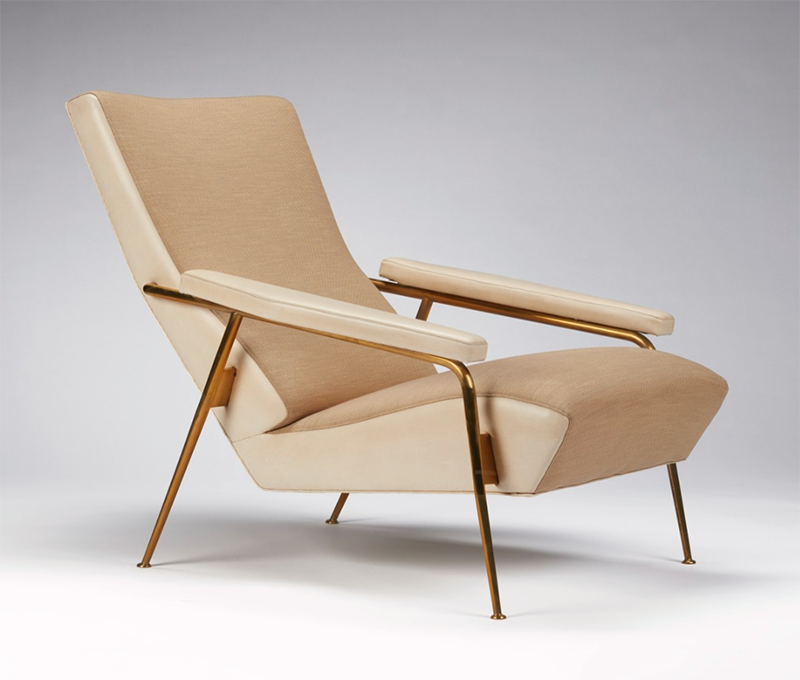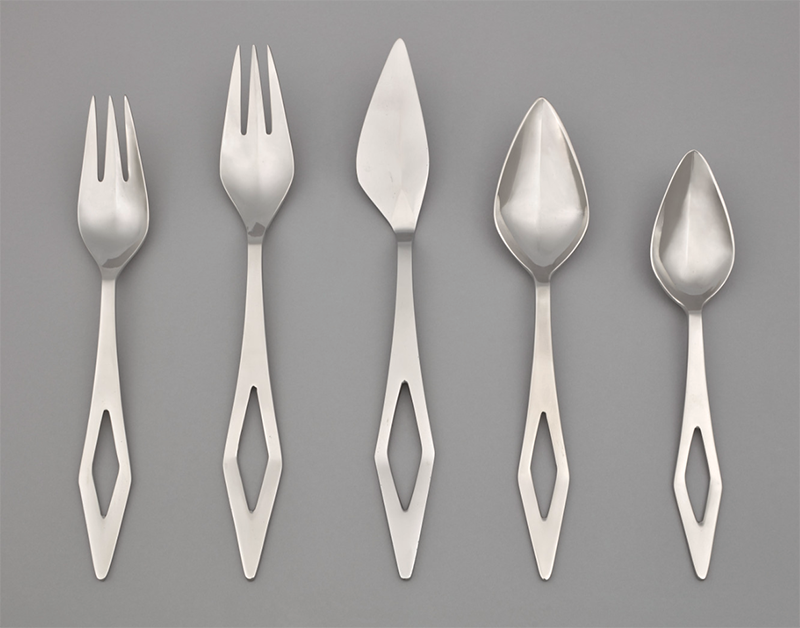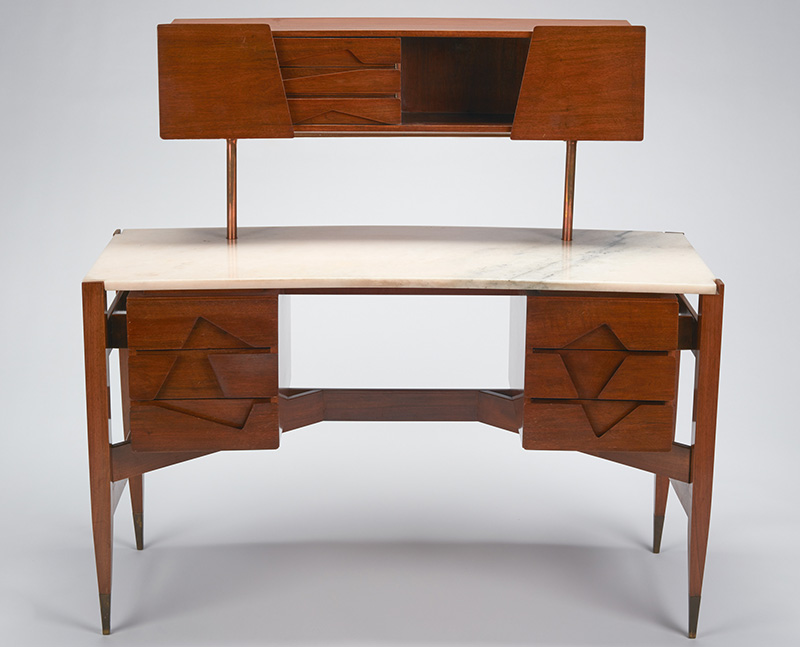Fifty Years of Gio Ponti at the Denver Art Museum
by Taryn Clary
In 1965, the Denver Art Museum (DAM) approached Gio Ponti to create a new structure for its growing collections. Then 74 years old, the Italian architect had firmly established himself as a master of Modernism across the globe and across disciplines. Over the course of a six-decade career, Ponti designed over 100 buildings in addition to a wide range of furniture and decorative arts, and he further spread his design principles through the founding of Domus magazine in 1928. The North Building for DAM (figure 1) would be one of his final architectural projects and his only finished building in North America. In celebration of the 50th anniversary of its completion in 1971, DAM has renovated and reopened the structure to the public with an accompanying publication and exhibition that demonstrate the timeless quality of Ponti’s designs.
Working in collaboration with Denver-based firm James Sudler Associates, Ponti’s initial plan for the building is best summarized by his question: “if a museum has to protect works of art, isn’t it only right that it should be a castle?” Although we might now question Ponti’s guiding principle, the North Building stands an impressive seven stories high, which gave DAM one of the first high-rise museums and provided ample space to protect and display its encyclopedic collection. The exterior was as inventive as the works of art within. Ponti understood the building as a “composition of vertical elements” rather than a simple box, and the final product was an angular and unconventional 28-sided shape (figure 2). He then decorated the walls with over one million glass tiles specifically manufactured for this commission and set by hand, giving the building a shimmering effect. Finally, the walls were relieved by windows of varying size and shape, as well as angular cut-outs along the roof that give the structure rhythm and make it “open to the sky, the beautiful Denver sky.”
Through a series of scholarly essays illustrated with historic photographs and archival drawings, the publication Gio Ponti in the American West by Taisto H. Mäkelä contextualizes this commission within the history of the city and the scope of Ponti’s career. A foreword written by Ponti’s grandson Salvatore Licitra conveys the designer’s passion for the project. In a letter to his daughter in 1969, Ponti opined, “What walls, what openings, what brilliance…! It is beautiful enough to die for, but that gives rise to another problem. EVEN SO I CANNOT DIE WITHOUT SEEING THIS WORK FINISHED.” Ponti did see the building to its conclusion, passing away in 1979. His contributions no doubt solidified DAM’s presence on the international museum stage, and elevated the physical building to the world-class stature of Frank Lloyd Wright’s Guggenheim and Marcel Breuer’s Whitney Museum of American Art.
Fifty years forward, DAM has grown in every sense: its collections now encompass over 70,000 objects, while its annual visitation has increased from roughly 150,000 in the 1970s to 850,000 in 2017. The nature of museums has also evolved, necessitating more space for educational programming and improved accessibility in addition to basic infrastructure updates. This prompted a campaign to revitalize Ponti’s design for the 21st century. Machado Silvetti and Fentress Architects were selected to respectfully build on Ponti’s legacy, considering the building as much a work of art as any of the pieces in the collection. Their additions include the 50,000 square-foot Sie Welcome Center, an art conservation lab, two restaurants, and an outdoor amphitheater, all of which prioritize visitor experience without compromising the campus’s unique profile. The architects even executed some of the details that Ponti was unable to realize in his original creation, including rooftop terraces providing views of the Rocky Mountains.
Though delayed by the COVID-19 pandemic, the opening of the renamed Martin Building could not be more timely and features an inaugural exhibition celebrating its architect, Gio Ponti: Designer of a Thousand Talents. Curated by Darrin Alfred, the exhibition establishes a dialogue between Ponti’s architectural style, ever-present as visitors walk through his halls, and the character of his work in furniture (figure 3), flatware (figure 4), ceramics, and glassware. Whether a candlestick or a large desk (figure 5), Ponti understood the importance of recognizing classical tradition while innovating for the future, and he advocated for industrial design that could be mass-produced without losing a sense of imaginative self-expression. He reduced designs to their essential forms, and the dynamic, lightweight results are functional and elegant in any decade. With a robust Architecture and Design collection to draw from, this is no doubt the first of many celebrated exhibitions to be held in the reimagined Denver Art Museum and will energize the field as Ponti intended.
Taryn Clary is a contributing writer for the Decorative Arts Trust and is a cataloguer for 20th Century Design at Sotheby’s.
A print version of this article was published in The Magazine of the Decorative Arts Trust, one of our most popular member benefits. Join today!





